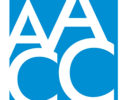Removing barriers to dual enrollment
By AACC 21st Century Center Staff
September 27, 2016
Successful dual enrollment programs require partnerships and innovation.
In rural Arkansas, where poverty and underemployment are common, a pilot program has been developed to provide certificates, credentials and licenses to high school students. The program is not only preparing students for good-paying jobs, but also filling local workforce needs.
Leaders from Arkansas State University-Newport and Cedar Ridge High School spoke about the program at a convening on college readiness in June. The meeting was led by the American Association of Community Colleges (AACC) and AASA, The School Superintendents Association, along with partner Hobsons.
Hobsons has published the proceedings of the meeting online.
This is the third AACC/AASA college readiness convening. The June meeting focused on the benefits of dual enrollment programs, and addressed the barriers and benefits of dual enrollment programs and the partnerships needed to successfully operate these programs.
Dallas County Community College District Chancellor Joe May and K-12 partner Israel Cordero, deputy chief for school leadership at Dallas Independent School District, have partnered on early college programs. But it’s not enough to just provide classes; they also have removed some barriers faced by students. All dual credit students are eligible for scholarships. Also, because 70 percent of students are transportation-challenged, free transportation passes are provided.
According to the published proceedings, “the school and community college district were successful in putting aside their territorial interests to focus on the network of services needed to support the success of the greater community.”
Continue the conversation on our LinkedIn group.



